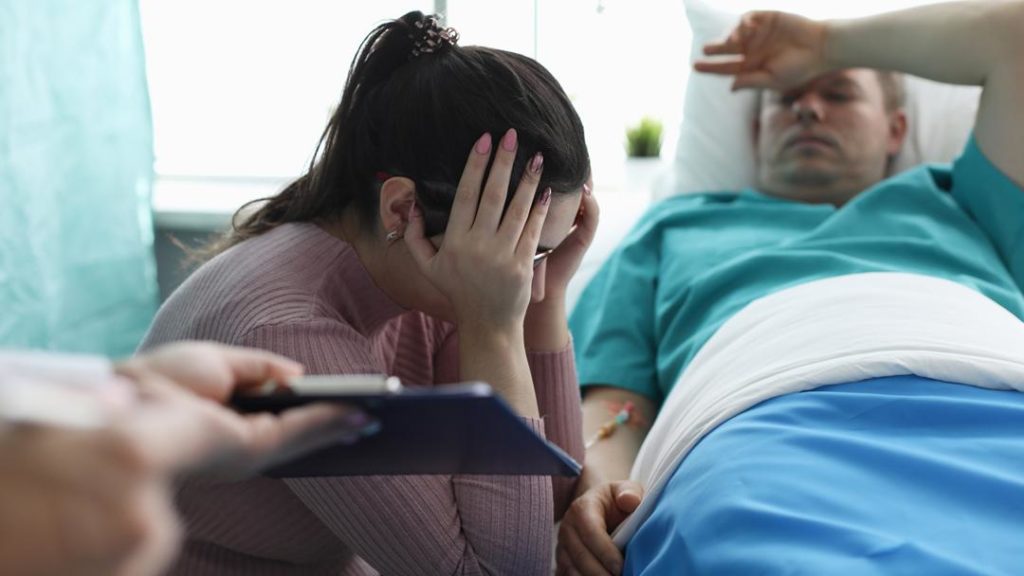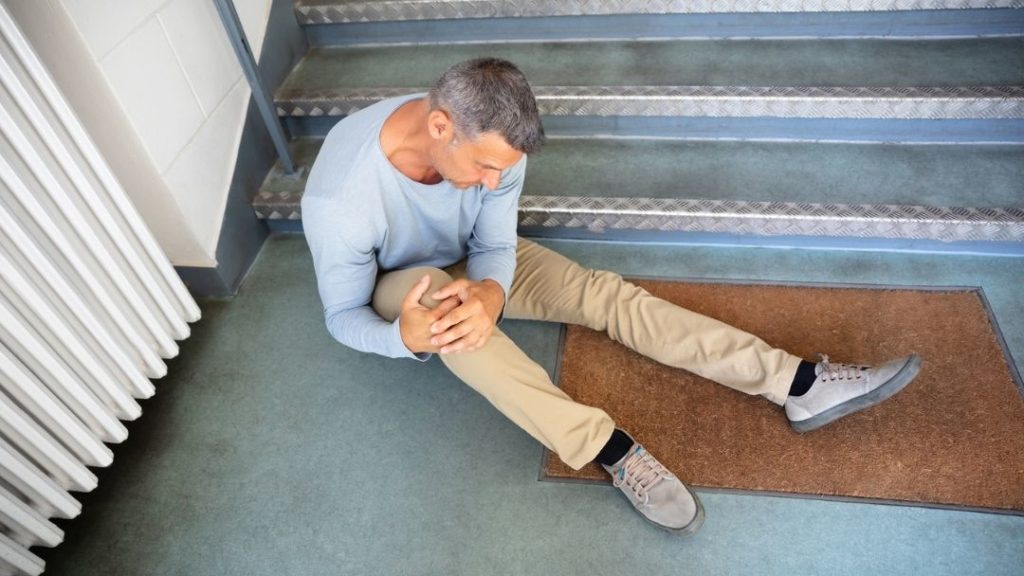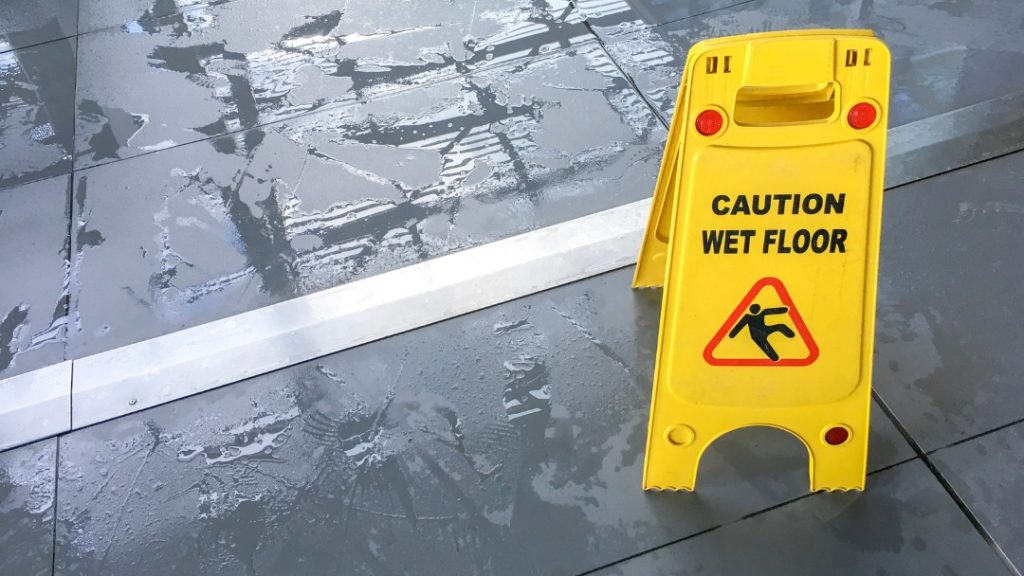
Comparative Negligence – Slip Trip and Fall
The Effect of Comparative Negligence on Your Slip, Trip, and Fall Claim
Have you experienced a slip and fall accident while on someone else’s property? Each year tens of thousands of individuals experience injuries as the result of a slip, trip, or fall, sometimes due to the negligence of others.
But what if the ‘fault’ surrounding the accident was, in part, of your own doing? In this guide, we explore the basics of a slip, trip, and fall accident, and how comparative negligence is taken into consideration in the claims process in New York.
Different Types Of Comparative Negligence
How does one differentiate between the many forms of comparative negligence and what impact do these variants have on slip and fall cases?
Comparative negligence is a legal concept applicable in personal injury cases, including slip and fall incidents. It allocates the fault in a proportionate way between the plaintiff and the defendant.
There are two main types of comparative negligence: pure comparative negligence and modified comparative negligence.
Pure comparative negligence allows the plaintiff to recover damages even if they are 99% at fault. The recovery amount is reduced by their degree of fault. For instance, if a plaintiff is found to be 60% at fault in a slip and fall incident and the total damages are $100,000, they will receive $40,000 after the reduction. This system is used in 13 states, including New York.
On the other hand, modified comparative negligence, practiced in 33 states, follows a 50% or 51% rule. The 50% rule allows recovery if the plaintiff is less than 50% at fault, while the 51% rule permits recovery if the plaintiff is 50% or less at fault. For example, in a state following the 51% rule, a plaintiff found to be 51% at fault in a slip and fall case would not recover any damages.
The type of comparative negligence applied can significantly impact the outcome of a slip and fall case. It directly affects the plaintiff’s ability to recover damages and the amount they can potentially receive. Understanding these differences is crucial for both plaintiffs and defendants in preparing their cases.
How To Prove Negligence In A Slip And Fall Case
To establish negligence in a slip and fall case, two crucial factors require careful examination.
First, it must be proven that the property owner had a responsibility to ensure the safety of visitors on their premises.
Secondly, the property owner’s breach of this duty through failure to maintain the premises with reasonable care must be demonstrated.
The property owner had a duty to keep the premises safe for visitors.
Establishing negligence in a slip and fall case necessitates demonstration of a minimum of four crucial elements, one of which is that the property owner had a duty to maintain a safe environment for visitors. This duty is defined by a set of responsibilities such as regular maintenance and inspection of the premises to ensure safety. Prompt and adequate measures to rectify any identified hazards. Clear communication and warning about potential threats on the property.
If the property owner neglects these duties, causing a slip and fall case, they may be held accountable under the principles of comparative negligence. The onus is on the plaintiff to prove that the owner’s negligence directly contributed to their accident, thereby substantiating their case.
The property owner breached that duty by failing to take reasonable care to maintain the premises.
Where, then, does evidence of a property owner’s failure to maintain the premises in a reasonably safe condition come into play, and how might this breach of duty be proven effectively in a slip and fall case?
In a fall case, the plaintiff must provide concrete evidence of negligence, such as photos or videos showcasing the hazardous condition that caused the slips and falls.
The comparative negligence law could affect the amount of compensation received, depending on the extent to which the plaintiff also contributed to their injuries. For instance, if the injured party was negligent by not heeding clear warning signs, this could reduce their fall claim.
Thus, proving the property owner’s negligence is a crucial part of obtaining just compensation.
How Comparative Negligence Can Be Used To Eeduce The Plaintiff’s Damages
In slip and fall cases, the defendant often employs a strategy of asserting the plaintiff’s partial responsibility for the incident. This strategy, known as comparative negligence, plays a significant role in determining the plaintiff’s damages.
Essentially, if the jury finds the plaintiff partially at fault, the monetary damages awarded to them will be reduced proportionately to their degree of fault.
The defendant may argue that the plaintiff was also partially at fault for the slip and fall accident
Interestingly, the defendant may employ comparative negligence as a strategy to argue that the plaintiff shared some responsibility in the slip and fall accident, thereby seeking to diminish the plaintiff’s potential damages. This approach is often used in cases where the accident occurred due to a trip or slip hazard that the plaintiff could have reasonably avoided.
- The defendant may claim that the plaintiff’s inattentiveness contributed to the accident, hence establishing a comparative fault.
- In some states, if the plaintiff is found to be even slightly at fault, contributory negligence may completely bar them from recovery.
- In other states, the defendant’s liability may be reduced in proportion to the plaintiff’s degree of fault in the slip and fall accident.
If the jury finds that the plaintiff was partially at fault, the plaintiff’s damages will be reduced by their percentage of fault
Under the doctrine of comparative negligence, a jury’s determination of the plaintiff’s percentage of fault serves to proportionally reduce the plaintiff’s award for damages. This is the effect of comparative negligence on slip trip and fall claims.
A person who trips and doesn’t exercise reasonable care can have their damages reduced under pure comparative negligence. The lawyer’s role is crucial in presenting evidence about the plaintiff’s care in fall accidents. Accidents personal to the plaintiff can significantly influence the injury compensation. The effect is a reduction in damages proportional to the plaintiff’s fault in the accident.
Examples Of Comparative Negligence In Slip And Fall Cases
Let us now turn our attention to concrete examples of comparative negligence in slip and fall cases. These instances highlight how the plaintiff’s own actions or lack of attention can contribute to the incident.
This will provide a clearer understanding of how comparative negligence can be applied in real-world scenarios.
The plaintiff slipped and fell on a wet floor in a grocery store. The plaintiff did not see the wet floor because they were not paying attention
In the realm of slip and fall cases, a clear example of comparative negligence can be seen when a plaintiff, preoccupied and not paying due attention, slips and falls on a wet floor within a grocery store.
Just as in various other accidents, such as car accidents, motorcycle accidents, and pedestrian accidents, the victim’s lack of attention contributes to the incident. This is equally applicable in slip and fall scenarios. Here are three instances:
- Truck accidents often occur when workers, preoccupied with other tasks, fail to notice hazardous conditions.
- Bicycle accidents can result from riders not paying attention to signs indicating potential dangers.
- In a car accident, if a driver diverts their attention, it can lead to catastrophic results, much like a client slipping in a grocery store.
These instances highlight how neglecting attention can lead to accidents dangerous in several contexts, emphasizing the importance of adhering to safety laws.
The plaintiff slipped and fell on a sidewalk that was covered in ice. The city had not salted or sanded the sidewalk
Continuing with the theme of comparative negligence, an illustrative case can be taken from an instance where a plaintiff slips and falls on an icy sidewalk, and the city, having neglected to salt or sand the area, shares in the responsibility for the incident. This case touches on various topics related to comparative negligence in a profound way.
| Party Involved | Negligence | Impact |
|---|---|---|
| City | Failure to salt or sand the icy sidewalk | Contributed to the hazardous conditions |
| Plaintiff | Deciding to walk on an obviously icy sidewalk | Increased risk of falling |
| Weather | Natural phenomenon, uncontrollable | Created the initial hazard |
The table above provides a breakdown of the different factors contributing to the incident, further exemplifying the intricacies of comparative negligence in slip and fall cases.
The plaintiff slipped and fell on a staircase in a friend’s house. The plaintiff knew that the staircase was rickety, but they used it anyway
Shifting our focus to a more private setting, we now examine a scenario in which a plaintiff suffered a slip and fall accident on a rickety staircase within a friend’s residence, despite being aware of its precarious condition.
In this case, three pivotal aspects of comparative negligence are highlighted:
- Knowledge of the hazardous condition: The plaintiff’s prior awareness of the unstable staircase constitutes a key element in determining their degree of negligence.
- Choice to proceed: Despite the identified risk, the plaintiff’s decision to use the staircase further exacerbates their liability in the incident.
- Absence of remedial action: The homeowner’s failure to repair the staircase or sufficiently warn visitors also contributes to a shared responsibility in the accident.
The Basics of a Slip, Trip, and Fall Claim
Under New York laws, victims of a slip, trip, and fall accident are required to prove that the owner of the property was negligent, failing to maintain the property and keep those on it safe from foreseeable harm.
Generally speaking, in order for an owner to be held ‘negligent’, the property owner must have failed to exercise what would be considered reasonable care to prevent said injury or had done something to contribute to the risk or injury.
In other words, just because you fell and were injured does not mean the owner is automatically responsible.
Similarly, the fact that the property was in an unsafe condition isn’t enough to win a claim either. You must demonstrate that the owner was aware, or should have been aware, that the property was unsafe, and that they failed to take reasonable actions towards remedying the problem.
Comparative Negligence: the Law and Burden of Proof
I was Injured on Another’s Property – not my fault, right?
Comparative negligence is used to determine the extent to which the injured party (plaintiff) in a lawsuit for slip, trip, and fall was negligent as it relates to the accident. Comparative negligence compares the negligence of the injured party vs that of the defense (property owner) in order to weigh how responsible each party was for the injury, and similarly, the amount of compensation that may be owed to the injured party.
In a slip and fall lawsuit, the property owner will attempt to show that the injured party somehow contributed to him or her falling. In order to do this, the property owner needs to demonstrate that the plaintiff did not exercise ‘reasonable care’ or that their actions were unsafe.
Examples of Negligence on Behalf of the Injured Party
- Running down hallways or rushing up and downstairs
- Not paying adequate attention to surroundings
- Wearing improper footwear (i.e. high heels on a hiking trail)
- Entering clearly marked prohibitive areas
- Ignoring warning or caution signs
- Hanging over a rail to snap a selfie
If the injured party is found to be comparatively negligent, it will reduce the amount of the final verdict for compensation to the extent of their comparative negligence.
What to do if you are involved in a slip and fall accident
After understanding the various forms of comparative negligence, it is essential to know the appropriate steps to take if you find yourself involved in a slip and fall accident. The events following such an incident can be disorienting, but the actions you take can significantly influence the outcome of a potential lawsuit.
Firstly, it is crucial to remain calm. The shock and pain might be overwhelming, but maintaining a level head will allow you to assess the situation accurately and make the right decisions.
Here are three critical steps you should follow:
- Seek Immediate Medical Attention: Regardless of the severity of your injuries, it is essential to see a healthcare professional immediately. Not only is this vital for your health, but medical records serve as concrete evidence in court, proving the accident’s impact on your physical well-being.
- Document the Incident: Keep a detailed record of the incident. This includes taking photographs of the accident scene, noting down the exact location, time, and conditions leading to the accident. If there were any witnesses, get their contact information and statements.
- Consult a Lawyer: It is advisable to seek legal counsel as soon as possible. A lawyer specializing in slip and fall cases can guide you through the complex process, ensuring all necessary steps are taken, and your rights are protected.
Following these steps diligently can help build a strong case, ensuring you stand a fair chance of receiving compensation for any harm suffered due to someone else’s negligence. Remember, the legal implications of a slip and fall accident can be complex, necessitating professional assistance.
Considering a Lawsuit for Slip and Fall in New York or the Bronx?
Reach out to the Kerner Law Group, P.C., and connect with an experienced slip and fall attorney in the Bronx with a documented track record of getting results.


